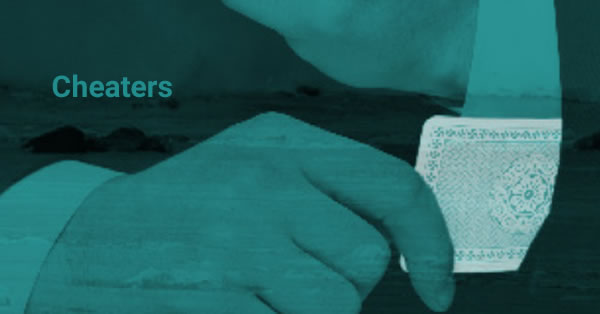Our “Climate Cheats” report released on Monday argued that our Government has been an accessory to climate fraud. We’ve had great responses, including agreement from New Zealand’s top scientists, endorsement from the Dominion Post, coverage in France and Australia and Action Station have even launched a petition to ‘dump the junk’ that you can sign here. The report has garnered some interesting responses, lets look at the Top 5 worst ones:
1. Climate Change Minister Paula Bennett
 “New Zealand made the best decisions it could based on the rules at the time”
“New Zealand made the best decisions it could based on the rules at the time”
She has to be #1 because she is the Minister. As yet we haven’t had any response to the report other than this one liner, and it really is a poor response from the new Minister of Climate Change (in this role for just 4 months).
Our report looks at the detail of what was known and when. What is clear is that the world long suspected these credits were dodgy. New Zealand was the only country to allow unfettered access to foreign credits and, and by mid-2013 we were the only buyer of the dodgy Emission Reduction Units (ERUs) in question – the most toxic of the carbon credits on the market. The Government would have to have been pretty ignorant to miss these facts.
Business tells us that they want certainty of climate change policy, and this decision to leave the Emissions Trading Scheme open to dodgy foreign units sent the price of carbon emissions plunging from $20 per tonne to a low of 15c per unit. Prices have now recovered to $13. How is that result providing certainty for business? The Government’s actions gutted the forestry industry and put cash in the pockets of New Zealand’s biggest emitters.
Minister Bennett has also admitted that the stock of New Zealand Units (NZUs) that was built up over this period (because polluters were using the el cheapo foreign credits instead) is now a problem. This is an underestimate – this is a huge risk to our economy that could hamper our attempts to meet our 2030 target and could end up saddling the taxpayer with the bill. This problem is a direct result of allowing in cheap fraudulent ERUs as our report explains.
How is all of this evidence of making the best decisions at the time as she claims? Regardless of what we knew at the time, we aren’t making the right decisions now. We are continuing to use these fraudulent credits to meet our international obligations. We have to dump the junk, Paula. Pull finger.
2. Carbon Trader Nigel Brunel
 “To use the sweeping statement ‘junk’ is a bit of an overgeneralization… you have to go through and look at all the projects”
“To use the sweeping statement ‘junk’ is a bit of an overgeneralization… you have to go through and look at all the projects”
Firstly, Nigel seems to be confused as our report wasn’t talking about all international credits, just the ERUs. Some of the international credits purchased are fine, or at least a lot less dodgy than the ERUs ended up. But it was ERUs that New Zealand gorged on, far more than any other country. In fact as a proportion of our emissions we used four times more than any other country.
As to his comments about having to go through and look at all the projects, well that is essentially what the Stockholm Environment Institute did. They reviewed the projects that created the ERUs and found that at least 89% of Ukrainian units and 82% of Russian units were of “questionable or low environmental integrity” – AKA dodgy as hell. As for the other 11% and 18% respectively, they didn’t bother looking at the rest of the projects but it’s a pretty safe bet many of them will be dodgy too.
By the way, of the 97 million ERUs NZ bought, 89% came from Ukraine and 10% from Russia – leaving 1% from elsewhere. So yes Nigel, we stick by the sweeping statement that these units are junk. Fraudulent, dodgy junk.
3. Straterra CEO Chris Baker
 “What about all the businesses and countries in the world that are paying little or no carbon price?”
“What about all the businesses and countries in the world that are paying little or no carbon price?”
Clearly Chris doesn’t value our international reputation. Why the hell did we sign up to an international agreement and make a commitment to reduce emissions by 2020 if we had no intention of honouring either of them? We would have more credibility if we simply said we won’t do it. Instead we promised we would deliver and then put all our efforts into disguising the fact we did absolutely nothing for the climate. All we achieved was paying $200m in guilt money to Ukrainian fraudsters.
It is like handing over a wedding present that you know fell off the back of a truck. Very very uncool.
4. Carbon Trader Nigel Brunel
 “All these [Emissions Reductions Units] talked about in the report don’t even exist anymore – even with the government, that game is all over.”
“All these [Emissions Reductions Units] talked about in the report don’t even exist anymore – even with the government, that game is all over.”
Nigel is back again with another clanger.
The ERU scam closed in mid-2015 so nobody could buy any more (this wasn’t a Government decision, by the way – NZ got cut off for not joining the second phase of the Kyoto Protocol). However, that doesn’t mean game over. As we pointed out in the report, the Government is now using those dodgy ERUs to claim that we are meeting our international climate obligations under Kyoto and our voluntary target of a 5% reduction by 2020. Quite simply New Zealand’s claim that we are meeting these targets is a joke as long as the ERUs are included.
We need to dump the junk credits to reclaim our credibility.
5. Former Minister Tim Groser
 This [keeping New Zealand open to ERUs] will ensure the ETS price of carbon continues to reflect the international price.
This [keeping New Zealand open to ERUs] will ensure the ETS price of carbon continues to reflect the international price.
Technically this statement wasn’t in response to our report, but it is such a shocker that we had to include it. Former Minister Groser had the gall to suggest that accepting junk units from the Ukraine meant that our Emissions Trading Scheme faced the ‘international price’. We were the only country in the world that accepted unlimited amounts of these fraudulent units, and by mid-2013 we were the only country in the world accepting any of them.
Here’s the consequence of that scumbag behaviour by our government; Over 2013-14, NZ companies were paying an average of under 30c per emissions unit. And remember they were still getting a 2-for-1 deal on top of that (one unit covered two tonnes of emissions), so the effective price was halved to around 15c per tonne. Meanwhile the price of European units – which EU companies had to mostly use – averaged over 5 euros ($8 NZD). How is that an ‘international price’?
Remember the wedding present analogy above? Well, this is like getting sprung for handing over stolen goods as a wedding present and justifying it by saying you paid the ‘international price’ to the bloke down at the pub.

